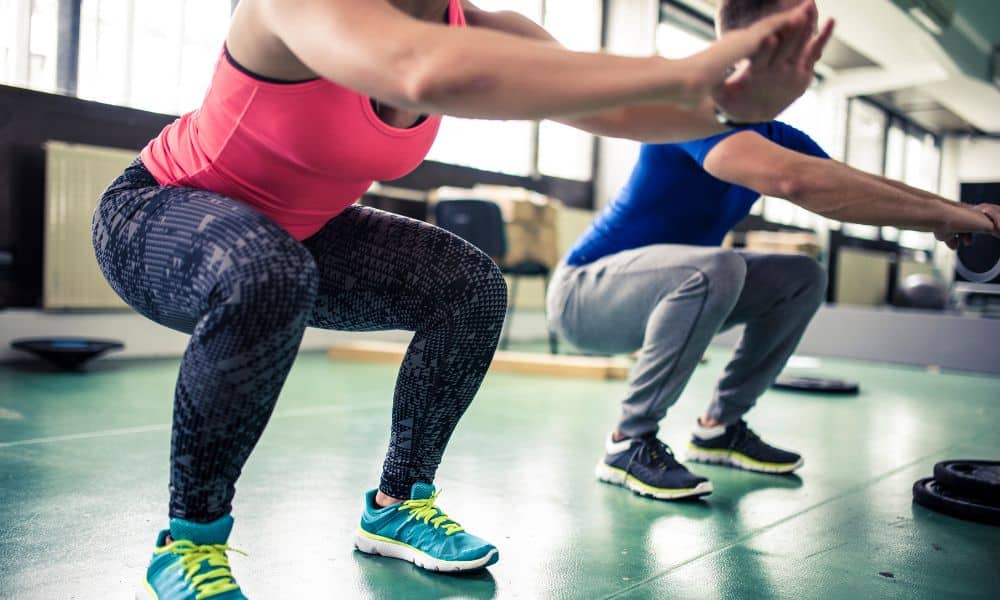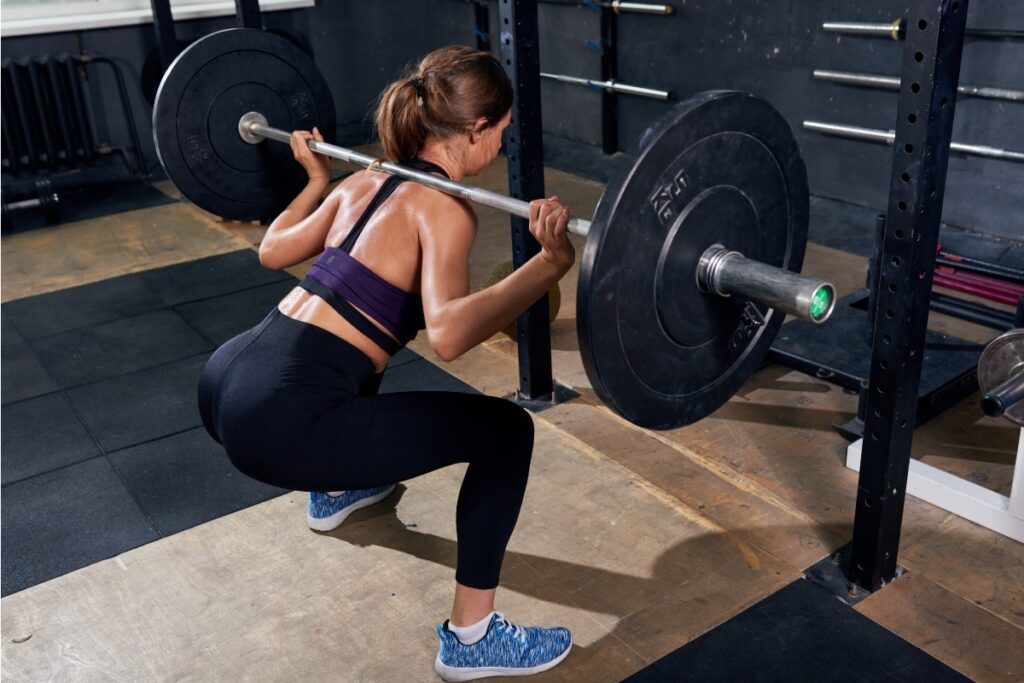The Kneeling Squat is a simple exercise that can be used to help build core and leg strength. It’s portable, so you can do it at home or on the go, without any equipment.
This article will cover everything you need to know about this effective exercise, including what muscles it works, how to perform it correctly, and its benefits. You’ll feel confident enough in your abilities that you’ll want to add the Kneeling Squat into your workout routine for years to come!

What Is the Kneeling Squat Exercise?
The kneeling squat is a variation of the regular squat. The main difference is that instead of having your feet flat on the floor, you put them in a kneeling position (i.e., your heels may be resting on an elevated surface like a bench or chair).
This variation engages the glutes differently than they are involved in a regular squat, making it challenging to master at first but ultimately worth it!
How To Do the Kneeling Squat Exercise:
The Kneeling Squat is one of the best exercises to strengthen your butt, thighs, and core. To do this exercise correctly, follow these steps:
- Get on your hands and knees in a push-up position so that your body forms an L shape with your legs straight behind you and arms bent at 90 degrees in front of you
- Keeping both hips square with each other, get into a deep squat position so that your thighs are parallel with the floor
Muscles Worked
The kneeling squat is an exercise that works the glutes and quads, as well as hamstrings, calves, and core muscles.
It would help if you had solid hips and knees to perform a proper squat. In addition, the knees should be aligned with the second toe of both feet. This will help keep your lower back straight during the entire movement.
Benefits
The kneeling squat is an excellent variation of the regular squat that can be used to improve its form. It’s also an excellent exercise for people who are recovering from injuries or have mobility issues. Kneeling squats allow you to isolate each leg while still doing an effective workout that will strengthen your core, lower back, glutes, and hamstrings.
Kneeling Squat Exercise Activate the Glutes
The glutes are the largest muscle group in the body, and they have a crucial role in injury prevention. If you’re not activating your glutes properly, you could be putting yourself at risk for injuries.
There are many ways to activate your glutes, but here’s one that’s straightforward: kneeling squats! This movement activates your hips, quads, and hamstrings (the muscles on the backside of your thighs). The kneeling squat also works well with other exercises, such as hip thrusts or single-leg hip thrusts, called “hip extension movements” because they focus on working out those muscles responsible for extending (or straightening) your legs behind you.
Improves the regular squat
The kneeling squat is a great way to improve your regular squat. It works the same muscles as the standard squat, engaging more muscles in your core. The kneeling squat is also a more accessible version of the traditional squat, making it a good option for beginners looking for something challenging but not too difficult.
Strengthens the lower back
The kneeling squat is a great way to strengthen the lower back muscles. The knee flexion required to assume this exercise position engages the muscles of your lower back, helping them maintain a neutral spine and preventing lower back pain.
Kneeling Squat Exercise Is Suitable for those with injuries or rehabbing
This exercise is excellent for you if you have an injury or are in the middle of a rehabilitation program. It can be done with a chair or bench and used as an alternative to the squat.
The kneeling squat works well with resistance bands, barbells, and kettlebells. If you don’t want your back to arch too much, try holding a dumbbell in front of your chest instead of over it, as shown here:
Common mistakes
- Keep your back straight but not stiff.
- Knees should not be past the toes.
- Knees should not be too broad (when you let them collapse inward toward each other). This will cause you to have lower back pain and maybe even knee pain.
- Avoid lifting your heels off the floor (this can lead to low back pain). If this happens, you are squatting too deep for your current ability level and need to work on building up endurance before proceeding with a deeper squat. A simple way of doing this is just by taking shorter breaks when performing squats so that there is less weight being held onto for any given period; this will allow for more recovery between sets, which will allow for more significant results when performed over time!
The Last Word on the Kneeling Squat Exercise, How to Do It, the Muscles It Works, and Benefits
The kneeling squat is a simple yet effective movement that improves your squat form and strengthens the lower body.
The key is to keep your back straight and chest up as you lower yourself, just like when doing a regular squat. You can do these with weights in hand or without any weight!




